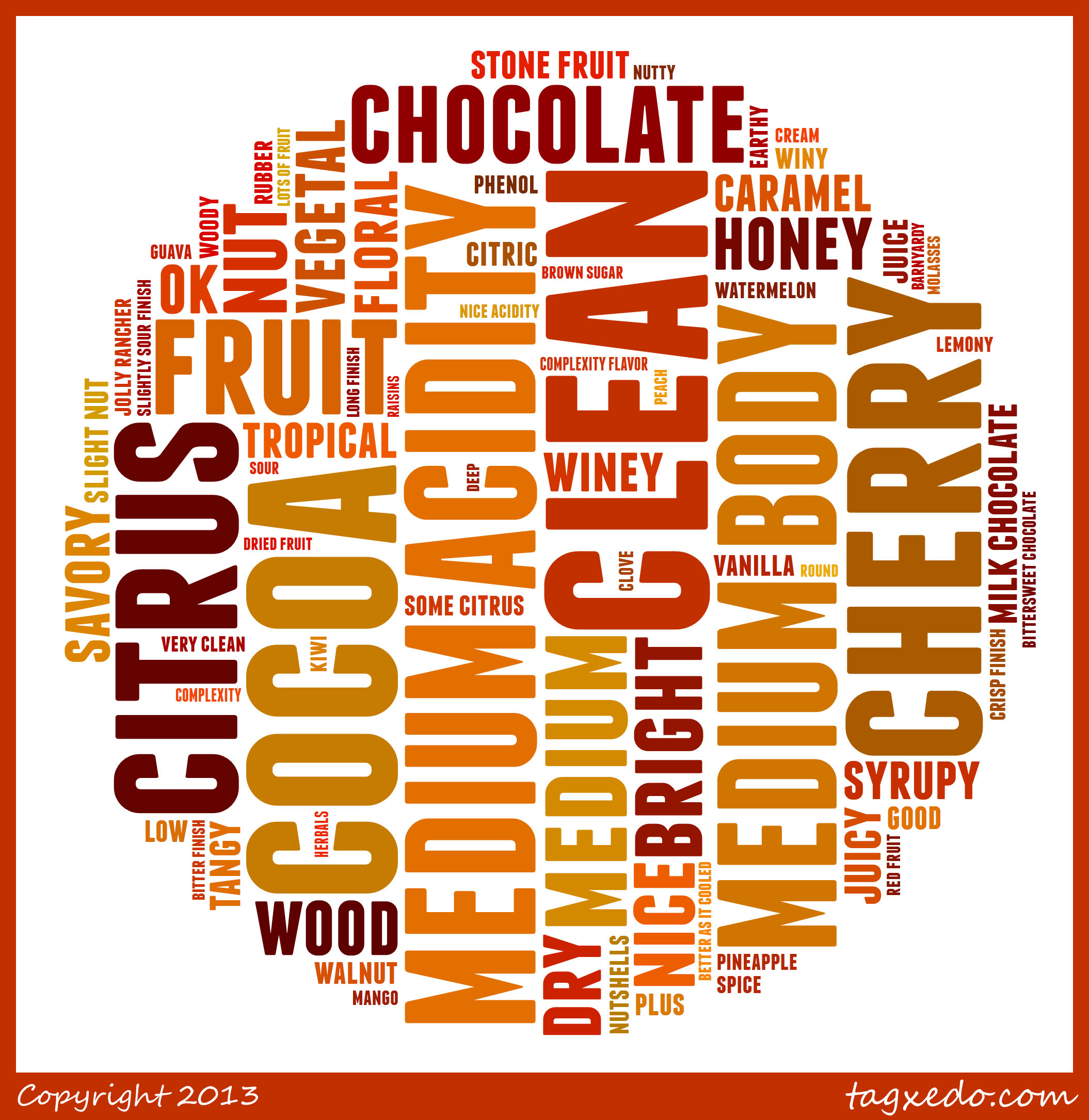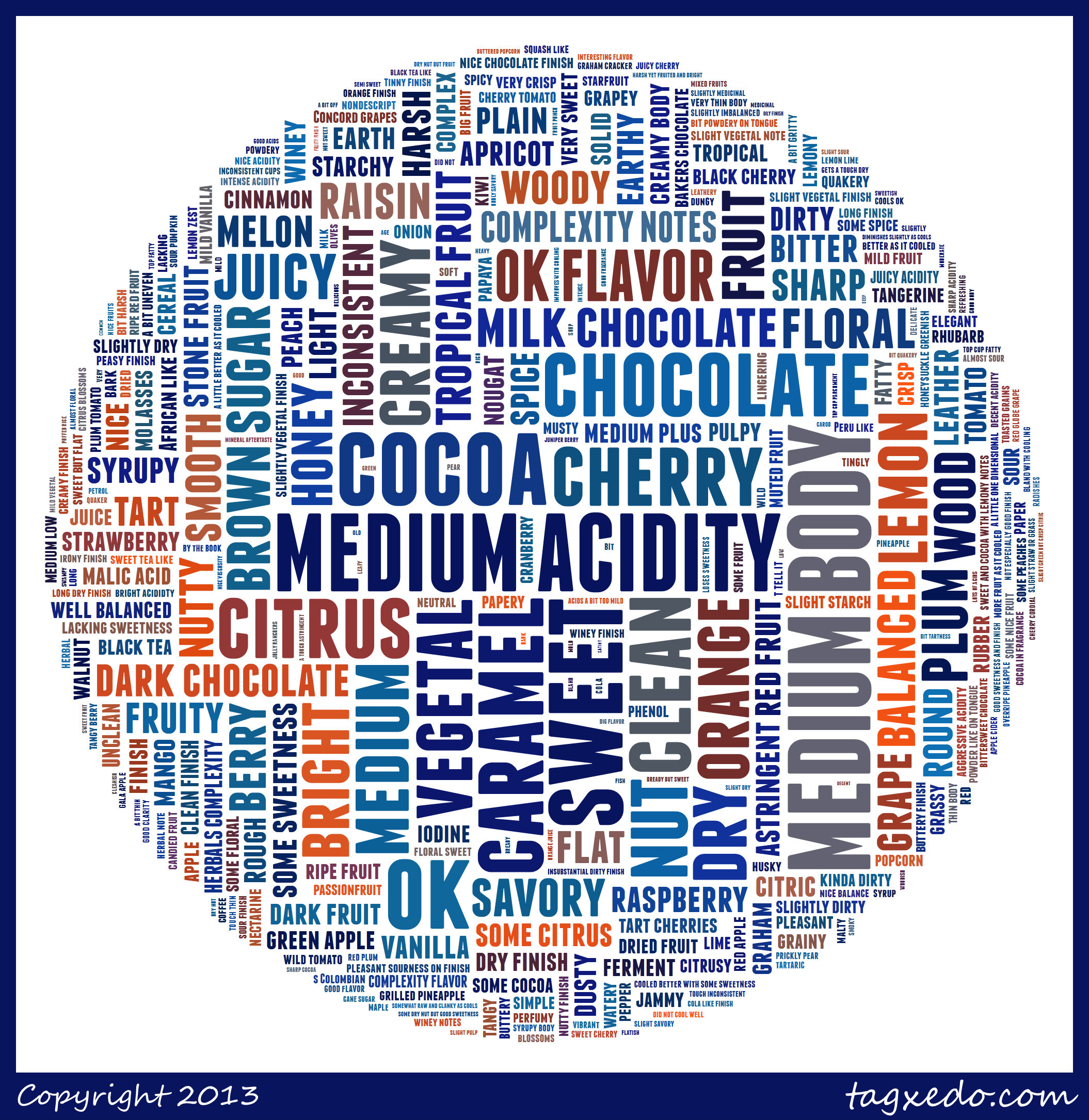Yesterday I shared some data showing how Castillo and Caturra samples performed as part of the baseline survey for our Borderlands Coffee Project. As I reflected on the quantitative results, which showed a narrow but persistent advantage for Caturra and a slightly higher upper bound, I wondered whether there was a quantitative difference between the two varieties. Does one variety produce something in the cup that the other can’t? Are there specific sensory dimensions that are particular to one of these varieties? Things that may be difficult to quantify but are easier to express in qualitative terms?
I turned to Tagxedo for help in creating histograms of the adjectives used in the cupping notes for samples of each variety.
Here’s what cuppers said about Castillo:
And Caturra:
Are there systematic differences? What are they? Do they matter?
The first thing that jumped out at me was the fact that there is exponentially more diversity in the terms used to describe Caturra (both favorable and unfavorable) than those associated with Castillo. This could mean that Caturra produces a more complex cup profile, but more likely reflects the fact that there were four times as many Caturra samples (32) than Castillo samples (8), and that the Caturra word cloud includes notes from 107 cupping reports, while the Castillo cloud was populated by adjectives from only 29.
Notwithstanding the reference to “barnyardy” flavor (see the fine print in the outer reaches of the northeastern quadrant of the Castillo graphic), I was surprised by the frequency with which all participating cuppers made reference to such positive fragrance, aroma and flavor traits in the Castillo samples. Surprised given all the negative chatter I have heard about Castillo in the cup, and given the results I published yesterday, which seem to reflect a narrow but consistent preference for Caturra. Cocoa, cherry, citrus and chocolate were among the most frequent characteristics cuppers mentioned in connection with Castillo.
These results do seem to be compelling evidence that Castillo is at least capable of producing a pleasant cup profile.
Yesterday I highlighted here some of the limitations of our baseline quality data and suggested that we cannot attribute our quality results to genetics alone, since there are so many other variables for which we did not collect data that might explain the variability of our results. Just because the particular Castillo samples we gathered data on didn’t hum on the cupping table doesn’t mean that Castillo isn’t capable of producing a humming cup profile. The scores could be attributable to practices in coffee production, harvest or post-harvest processing – variables omitted from our analysis — just as easily as they could to Castillo’s genetics.
But the fact that some of the Castillo samples did perform well (they included a high score of 86.5 and all the positive attributes identified in the graph above) suggest that Castillo does have some redeeming qualities in the cup. Poor farming and processing practices may ruin even the highest-quality cultivars, but even the best practices cannot produce notes of cherry and chocolate and citrus unless those attributes are in the DNA of the cultivar.
More careful grouping and analysis of these qualitative results may yield more insights. In the end, however, I suspect my observations yesterday on omitted variable bias may mean these histograms are fun to look at but not the source of any extraordinary breakthroughs. More control of farm management and milling variables will be needed to more credibly attribute differences in cup quality between Castillo and Caturra to their underlying genetics.




